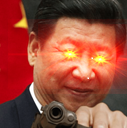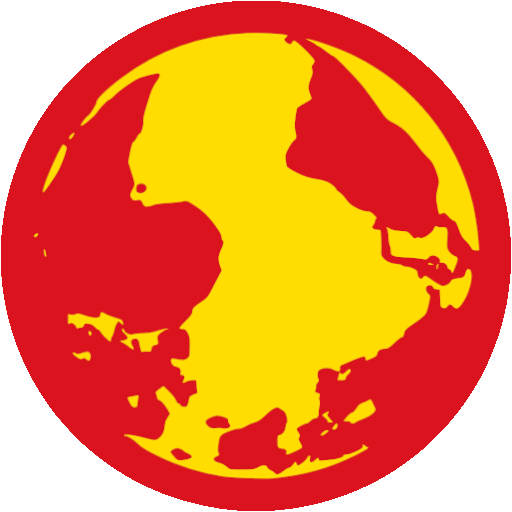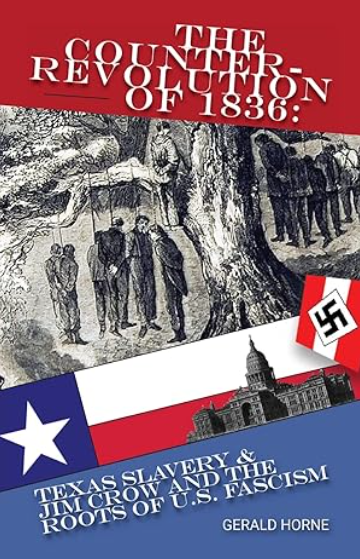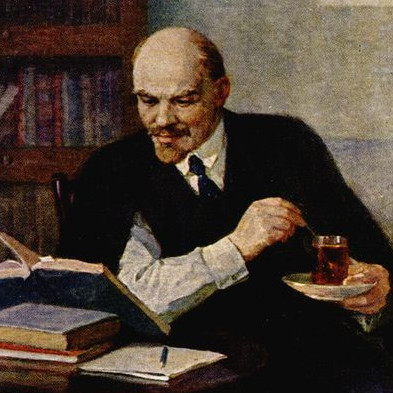- 10 Posts
- 120 Comments

 6·3 months ago
6·3 months agoI’m assuming CPUSA authors must be using some abridged version whether they made it or found in material related to the Red Nation.

 7·3 months ago
7·3 months agoIt’s actually a separate work from the Red Deal, it’s in the book Red Nation Rising: From Bordertown Violence to Native Liberation. The latter book is a required reading in the CLN library, and the former is unorganized in there, though the Marx Madness season 8 on the Red Deal is a must listen.
Actually though, after looking for the quote they used from Red Deal, I actually can’t find it in the book. When I google’d it the only relevant link was their article.
The definition in Red Deal is as follows, and I think, is so much more impactful than represented:
Bordertowns emerged from the dispossession, relocation, and ethnic cleansing of Indigenous people. Borders manifest themselves outside of the common understanding of national boundaries marked by fences, walls, and checkpoints. They are also found within the settler nation itself, at the boundaries between Indigenous and settler communities.
Bordertowns are those that surround Indigenous nations, often with significant populations of Native people, yet they are typically marked and policed as white spaces; in the same sense that suburbs were originally (and still are) perceived as spaces for whiteness. The function of a bordertown is to exploit the identity, labor, and death of Indigenous people. Indeed, often a bordertown’s economy relies on Native workers and white tourism to museums and stores that contain our art, ceremonial objects, and even the reinains of our ancestors. On one hand, settler occupation is always built on Indigenous death, and on the other, bordertowns trade in a narrative of an Indigenous “past” for tourism.
Territories held by Indigenous nations came under settler control during the several centuries of European settlement and westward expansion through war, massacre, treaty negotiation, and privatization followed by forced selling, all of which forced Indigenous peoples off their homelands and onto reservations. The Homestead Act of 1862 and Dawes Act of 1887 served to divide entire nations into individual landholdings that, coupled with threats of violence and increased dependency on the European capitalist economy, could be transferred to private settler ownership. Many Indigenous people were forced to sell their parcels of land in order to settle debts, pay taxes, or feed themselves and their families.
The Homestead Act gave large tracts of these lands as well as those recently secured by US Army violence to white settlers for very cheap and was repealed only in 1975, after transferring millions of acres of land to white settlers. As Indigenous nations became dislocated from their lands and forms of subsistence, they increasingly became forced into wage labor for the very settlers who stole their land. They also were forced to rely on nearby trading posts and mercantile stores to exchange rug weavings, pottery, and wool for everyday necessities. Settlers, on the other hand, were largely dependent on Indigenous labor in the early years of westward expansion and, to this day, bordertowns rely on Indigenous people to work, shop, and create products to sell in stores or markets that profit off of Native art and culture.
Many of these lenders, pawnshops, and trading posts offer Indigenous people a small profit for family heirlooms or artwork while selling these items at a higher price to white collectors, museums, and wealthy individuals. Car dealerships, payday lenders, and other predatory businesses prey on Indigenous people on and off reservations by locking them in an endless cycle of debt. This relationship of capitalist exploitation in bordertowns continues the long history of colonial extraction from Indigenous peoples, lands, and labor. These bordertowns, like those along the southern border, are locations of extreme levels of surveillance, policing, and violence in order to contain the “threat” of Indigenous existence that contradicts the myth of settler society. The continued presence of Native people signifies the incompleteness of the settler project, which responds with anti-Indigenous violence. Violent interactions with the police are common, along with the enforcement of laws restricting Native peoples’ movement and behavior that proliferated as bordertowns arose across the West.
In many cities, laws prohibited Indigenous people from living within the city limits unless they were servants to wealthy whites who agreed to house them on their property, out of sight. While these laws have since been repealed or evolved into anti-vagrancy laws that criminalize homelessness, panhandling, and even resting in public, bordertowns have a long history of violent anti-Indian sentiment. A common form of violence inflicted upon Indigenous people is “Indian rolling,” or the targeted assault, torture, and murder of Native people. The term was first used in 1974 to describe a gang of white teenagers’ murder of three unsheltered Diné men in the bordertown of Farmington, New Mexico. The history of anti-Indian violence is, of course, much older than this.
In addition to the state violence enacted by the US military during the Indian Wars, private settlers, militias, and companies engaged in decades of unilateral violence against Indigenous people. State and federal governments paid these settlers for their service in volunteer militias that hunted, killed, and captured Indigenous people throughout the western states. They collected bounties for scalps and body parts and often took it upon themselves to organize and arm these militias to wage genocide against Native people.
This anti-Indian violence has evolved over the centuries into the forms of bordertown violence we face today. For example, “Indian rolling” is an ongoing issue in bordertowns, where mostly white and Hispanic teenagers and men target Native people because of these deep, underlying logics of anti-Indianism. In 2014, three Hispanic teenagers attacked three Diné men in Albuquerque, New Mexico and bludgeoned two of them to death while one narrowly escaped. The three teenagers expressed no remorse and were described by the media as unmotivated by racial hate, yet as we have seen, they were practicing a long American tradition of anti-Indian violence.
This violence also takes on a particular gendered form in bordertowns, especially in areas where resource extraction occurs. Indigenous women, nonmen, and trans and nonbinary people experience higher rates of violence—more than any other race—inflicted by white supremacy and heteropatriarchy. MMIWG2S, which will be described more thoroughly in Part II: Heal Our Bodies, is rarely framed as a form of bordertown violence and both are described as recent phenomena.
Gendered violence and anti-Indian violence have long upheld the colonial project of resource exploitation, relocation, displacement, and genocide since the first military outposts and forts were constructed along the western “frontier” of the fledgling United States. Native women and girls were lured, sold, and kidnapped to be sex trafficked to soldiers and traders who manned these outposts and forts, and the same happens today in settler cities. Bordertowns are the original “man camps,” where men who work in extractive industries live while on the job in oil and gas, logging, and mining. One of the first lines of struggle to end bordertown violence is the MMIWGz2S campaign.
Another front line against bordertown violence that needs urgent attention is unsheltered Native populations who face a large portion of settler violence, both state and private, yet rarely receive justice when they are targeted by police, Indian rollers, white supremacists, or white business owners. Unsheltered Indigenous people are criminalized for merely existing and are constantly forced to move from place to place to avoid arrest and harassment. White business owners respond violently to unsheltered Native people because of their disruption to the capitalist economy and to the image of bordertowns as tourist traps selling Native cultural items as trinkets. Therefore, we must move to organize unsheltered relatives into communities capable of defending themselves from settler violence and to directly advocate for their safety and well-being. Tent cities, which are autonomous communities of unsheltered people with communal services and their own forms of governance, have been successful in providing unsheltered people with safety in numbers, access to food, medical attention, and supplies, as well as a sense of community rather than social isolation. We call on everyone to defend tent cities from the frequent police raids and sweeps that have destroyed tent cities across the country.
…
Whole thing won’t fit but you get the idea.

 3·3 months ago
3·3 months agohttps://lemmygrad.ml/post/5309849/4833285
A relevant comment I had last week:
Some light class analysis of settlement eras.
Pre and Early US Period (1620s - 1780): Averaging a 1000-10,000 settlers per year, mostly “Adventurers” (literally venture capitalists who sponsored colonies, merchant and/or soldier background), share-owners - people like the “Pilgrims” who signed onto a company of Adventurers’ plan to work the land and share profits with the company, the indentured servants of the above classes, contracted workers (mostly sailors or those hired onto the company for x many years), and a small amount of slaves (slavery picked up heavily in later years). Servants were outnumbered by the above classes, they did a lot of the heavy labor in the early years, but generally were wealthier and more privileged the more the colonies developed. Predominantly servants were obligated to shares of their master’s stake in the colony after completion of their contract, they are somewhat of an indirect “partner” in the colony itself. The colony would trade for goods with natives and traveling fishing ships and send the proceeds back to the companies/pay dividends to investors. The Cromwell Revolution and Colonization of Ireland would bring military veterans, later sons of the upper peasant and lower noble classes, to the colonies and they would be purchasing land from the share-owners. “Modern real-estate” is actually Anglo-America’s first big industry. Most of these people were English, Scot, Dutch, or perhaps protestant Irish upper class, religion was a big factor at this time. In the 1700s a lot of the settlers were actually already settlers in the Caribbean, like Alexander Hamilton. These people were leaving the Caribbean colonies because there were many slave revolts and the European population down there was outnumbered by African and native slaves 5-10x.
“Antebellum” US (1780-1864): 10k-300k yearly ramping up over time. Just under half were from Ireland, mostly peasants (and some Scot/Anglo settlers) whose crops were blighted. The rest were largely from Germany, northern Europe, and Britain, again likely Bourgeois or wealthier peasants as many Germans had the wealth to immediately join the “frontiers” while most Irish were stuck in the port cities. This would be the time Marx was contemporary to. Workers in England were privileged from the wealth pouring in from the slave colonies, India, and Ireland, but Marx was still able to get many of them to fight their own direct interests by refusing to help the Confederacy (the slave colonies). [1]
Pre Civil Rights US (1865-1965): Peak settlement occurred in the 1880s-1920s. It was at first uniformly from north and western Europe, during the peak they were mostly from southern and eastern Europe. Settlers hailing from the north and west were still of usually upper-class extraction, a continuation of the trend above, where many are immediately settling the “frontier” in so-called “Indian Territories”. Many of the southern and eastern settlers would have been expropriated peasants, or peasants who suffered from crop failure (a condition the USSR would finally solve). At this time though, many of these “immigrants” were not actually intending to settle, they were teen boys and young men who would work in the US for some years and send money back and usually later returned (we are talking more than half returned). So much of the workforce in the port cities was once again “indenture”-ish workers, this time as migrants, which would expand after 1965 when “immigration” came heavily from Asia and Latin America. Some plant a foothold with property or citizenship. There are still millions of these workers in the US from the high-earning H1-Bs to the low-earning produce workers. Even most US states are stocked by “internal” migrant workers from other states who are often paid to relocate.
- I’d like to call attention to this part, in particular, because even though his allies in the English working class would materially benefit from continued relations with the Confederacy, he was able to get them to organize against these interests recognizing that long term strategy necessitated the end of the “particular type of Colonialism” that developed in the American South, and that European capital was dependent on.

 13·3 months ago
13·3 months agoOn continued land-relations here’s Randy Lewis (Wenatchi) showing Professor Nick Zentner of CWU the area he has collected roots in his entire life, and he had driven his grandparents 100s of miles from the reservation to continue the practice of gathering they learned before relocation. This land just happens to be open for them to continue because the area around the highway is state property. He’s been getting more of his younger family members to start doing it, to maintain the patches. What blocks him from fully recovering the practice amongst his nation is settler-colonialism (and capitalism, but remember Set-Col is Imperialism), it makes no sense to define the magnitude of settler-colonialism by how little the patch is. We should measure it by the total opportunity cost loss from his kinship relations (nation and friends) from the state of being removed.

 5·3 months ago
5·3 months agoLiterally US state media

 19·3 months ago
19·3 months agotheir stances are so swagged out




 19·4 months ago
19·4 months agoMore like American Cracker Party

 9·4 months ago
9·4 months agoBandera was in Plast, then he later recruited from it in forming the OUN-B. The Ukrainian Greek Catholic Church funded Plast, and also the SS Galicia Division having string ties with the OUN-B. Plast in the Diaspora remains connected the the UGCC and former SS members set up the scouts over in the US, CA, and AUS. Here they taught revisionist history and celebrated Bandera and whitewashing their actions. After the union fell, Plast veterans went back to Ukraine and took over main industries and state positions. After the coup in 2014 the state made Plast almost mandatory as an assimilation tool.
The Ukrainian scouting movement known as Plast was formed in 1911 in Lviv. Throughout more than 100 years of its activity, Plast has endured various challenges: from world wars, when Plast scouts showed their endurance under extreme circumstances, to a period of underground activity when Plast was outlawed by the Polish state in 1930.
When the Soviet Union took control of Ukraine it banned the organization, but the Ukrainian diaspora revived Plast after World War II in different parts of the world: Canada, the United States, the United Kingdom, Australia, Argentina and others.
Plast was to eventually renew its activity in Ukraine in 1989. This year marks the 30th anniversary of the restored movement in their homeland. Today Plast has 10,000 members in Ukraine and thousands in nearly 20 countries – which makes it the largest Ukrainian youth movement in the world.
Among the famous Plast members were not only such historical figures as Stepan Bandera or Roman Shukhevych, recognized as heroes of the anti-Soviet nationalist uprising in Ukraine, but also economist and benefactor Bohdan Hawrylyshyn, former major archbishop of the Ukrainian Catholic Church Lubomyr Husar, and Canadian Deputy Prime Minister Chrystia Freeland.
…
Active position
Although Plast calls itself “non-political,” it has also never shied away from supporting Ukraine’s fight for independence or helping in its struggle to counter the Kremlin’s attempts to undermine Ukrainian sovereignty. Many Plast members took leading roles in the protests that became the 2014 EuroMaidan Revolution, and when ex-President Viktor Yanukovych’s special police forces shot and killed more than 100 protestors, Plast members were among the dead and wounded.
They also were among those joining the armed volunteer battalions in spring 2014 that fought against Russian-backed separatists. But for the diaspora, Plast often serves as a bridge between modern life and Ukrainian tradition and between their countries and Ukraine.
Once again I have a Chunka Luta book recommendation: Indigenous Paleolithic by Paulette Steeves
Archeology as a discipline in the West functions as a Colonial tool to deny the history of Indigenous peoples. The biggest example is the “Clovis First Theory” (debunked) that posits all Indigenous peoples of the Americas descend from migrations across the Bering Strait during the last glacial maxim. Archeologists who made their careers on this study have bullied and physically harmed opponents to their hypothesis. US settlers over and over have destroyed archeological sites intentionally (and many unintentional as well) and this has been used to deny how long people have been living in the western continents. (Another example is the “genetic testing” and other racism that posits European settlers are “more indigenous” than Arabic-speaking Palestinians).
This is once again, a projection onto China what the Whites have been doing all over the world.

 21·4 months ago
21·4 months agoRelevant snippet from Palo Alto:
Safiyo Mohamed immigrated from Somalia only three months before she started as a stower at an Amazon warehouse in Minnesota. After three days of training (only in English), she began emptying incoming boxes from the conveyor belt into boxes from which the pickers picked. The system had a strict quota: 2,600 items sorted for every 10-hour shift, or a consistent average of less than 14 seconds per object. To fit in any kind of break you had to go faster, so as a beginner, Safiyo tried to avoid taking any breaks. Still, after her first week, her manager told her she was too slow and made more mistakes than the acceptable number: one per shift, an inhuman error rate of .04 percent. What help she got concerning strategies for improvement came from the other Somali workers who filled the warehouse. (As in the Hoover-era gold mines, white English-speaking managers boss groups of nonwhite workers, whose ethnic composition depends on the location; in Minnesota’s Twin Cities, a high proportion of them are East African immigrants.) “After my shift, I couldn’t even cook for myself. I barely had the energy to take a shower and often went to bed with an empty stomach,” Mohamed recalled in an essay about her experience for Sahan Journal. “I had nightmares about getting fired, disrupting the little sleep I was getting. They treated me and every other warehouse worker like a machine, not a human.” Feeling like she had no other way to support her family, Safiyo lasted longer than most, 30 months. In Amazon’s numbers, she turns up as an unqualified success. That’s how it’s supposed to work; that’s how Amazon came to dominate retail and how Jeff Bezos became the world’s richest man.
A detailed 2020 investigation found that Amazon’s warehouse workers have a serious-injury rate nearly twice the warehouse industry average. And the more robotized the distribution center, the higher the injury rate. “If you’ve got robots that are moving product faster and workers have to then lift or move those products faster, there’ll be increased injuries,” an Occupational Safety and Health Administration inspecting physician with experience in the company’s facilities told reporters. Racing to catch up with machines rigged to run hot hurts people. Efficiency causes injuries, which is another way of saying that, for Amazon, injuries are efficient. Amazon’s delivery must be very efficient, because drivers get injured even more—a lot more. And unlike warehouse workers, Amazon delivery drivers don’t technically work for Amazon, even if they’re wearing Amazon uniforms delivering Amazon packages in their Amazon vans following Amazon’s directions to Amazon customers.
For most of its existence, Amazon got its packages to customers’ doors just as everyone else does, contracting with the U.S. Postal Service or the big private shippers UPS and DHL for the dreaded “last mile” delivery. But as part of Operation Dragon Boat, the company planned to bring shipping inside the Amazon tent, or at least next to it. Driving trucks around is dangerous—for drivers, for the other people on the road, and for the legally liable employers. Trucks kill people, especially when you drive fast. Amazon drivers, unsurprisingly, have to drive fast if they want to keep their jobs, and their trucks do kill people. But when it comes time to hold someone responsible, Amazon is nowhere to be found. Patricia Callahan’s 2019 investigation for ProPublica and the New York Times couldn’t establish exactly how many deaths Amazon drivers were responsible for because they are all contractors, hired through the Delivery Service Partner program.
Amazon has absurd injury rates while they get a lot of great press for their “automation”, but what such “automation” is actually doing is setting a dangerous pace for the human bodies. With such high turnover and higher than local average wages, Amazon is able to pace workers at inhuman speeds, to their body’s breaking point, because each individual worker is an expiring commodity to them.

 10·4 months ago
10·4 months agoputs on conspiracy hat: inb4 shooter is Uke agent

 7·4 months ago
7·4 months agoYou’re already underselling the level of crosstalk between US white labor unions and the KKK. The St Louis “Soviet” formed a lynch mob during WW1.

 15·5 months ago
15·5 months ago
“One lesson from Texas history is that repression was so severe because resistance was so daunting-a lesson to keep in mind as this century unfolds”

 15·5 months ago
15·5 months agoEvery monarchy in the world today is a protectorate of the British or Americans.
I’m not kidding.

 5·5 months ago
5·5 months agoNo it’s not. Wages in the Imperialist countries are buffed by super-exploitation of the global South.
The amount of resources Americans use means that they are condensing into a “middle class” above the 3rd world nations workers and below the Imperial Bourgeoisie.
Spending most if not all of your paycheck does not mean you aren’t “middle class” (petty bourg or labor aristocrat). You were never meant to be able to accumulate wealth, the bourgs want you to consume it and for them to get it in their balance sheets at the end of the day because you bought goods and services from their property. If you are accumulating significant wealth that can’t be wiped out due to crises (ex: getting very ill, medical costs), you are certainly not exploited. If you are consuming more labor than you put out, but break even on paper, you’re still not exploited (Imperialist wages).
This is why Economism (and accompanying social democracy) is dead end politics that is incapable of handling national contradictions that Imperialism feeds on.
As well, the top 80% of income brackets have been getting increased wealth and income, since the end of WW2.


 19·5 months ago
19·5 months agothis is similarly the current SK government’s stance on getting called out for their sexism: “we can’t be sexist, look at Afghanistan, that’s sexism”

 15·6 months ago
15·6 months agoThe only segment of the US working class that is difficult to describe as a labor aristocracy (in NAFTA states) is being shredded to pieces.
This segment of the working class should be the focus of organization in the core. The rest should only be organized secondarily, as their interests align with Imperialism too much.

 21·6 months ago
21·6 months agotell them specifically what they did wrong and why they shouldn’t do it, explain how their behavior could backfire on them

This was the type of language heard in the so-called “St. Louis Soviet” before white unionists started a lynch mob against the Black people burning down and stealing houses in 1917.